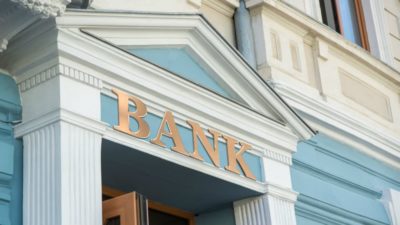There are growing worries over just how much risk Canada’s banks are carrying, and Bank of Nova Scotia (TSX:BNS)(NYSE:BNS) is creating some of the greatest concern. This is because prior to the sharp collapse in commodity prices and the latest economic ructions, the bank boosted its exposure to volatile emerging markets.
Now what?
For this reason, along with growing concerns over the quality of its unsecured consumer-lending portfolio, global ratings agency Moody’s downgraded the bank earlier this year, citing concerns that the bank had moved into higher-risk businesses that are vulnerable during times of economic downturns.
It also has considerable exposure to the commodity-dependent and historically volatile economies of Latin America.
Latin America makes up about 2.8% of its total loans with the biggest concentration in deeply troubled Brazil. Not only is Brazil caught in its deepest protracted economic slump in over two decades, but the country’s business and political elite, including President Rousseff, are caught up in a corruption scandal. This is creating considerable risk and economic instability.
Then there is Bank of Nova Scotia’s exposure to Asia–China in particular.
You see, 3% of its loan book is located in Asia with the biggest exposure to China, a country that is finding itself in an deep economic slump that has led to fears of a hard landing. If this were to occur, the majority of economies in Asia would be sharply impacted because of their close economic relationships with China.
If China were to experience a hard landing, then the commodity-dependent emerging markets of Latin America would also be impacted. This would trigger a sharp rise in impaired loans across Bank of Nova Scotia’s international business, which would eat into its profitability.
However, it is worth noting that Bank of Nova Scotia’s total international lending exposure is a mere 8% of its total loan book, and it is reviewing a range of measures to lessen this risk. For example, it plans to divest itself of some of its Asian businesses, including its 49% interest in Thailand’s Thanachart Bank Pcl.
Nonetheless, this is not the end of the story. Bank of Nova Scotia has the greatest exposure of any of the major Canadian banks to the beleaguered energy patch. This amounts to total drawn and undrawn commitments to the oil industry of $32 billion, or 6.5% of its total loans.
With signs that sub-US$40 crude is here to stay, there is considerable pain ahead for Bank of Nova Scotia. Not only are a range of energy companies battling to remain cash flow positive, but consulting firm Deloitte has estimated that about a third of all oil companies could go bankrupt this year.
So what?
Investors, get ready for a bumpy road ahead with Bank of Nova Scotia as it’s facing its fair share of risks at this time. Nonetheless, it does remain adequately capitalized and highly liquid, which helps to reduce those risks.
It is also working to reduce that risk by proactively monitoring its energy portfolio; 60% of its drawn energy loans remain investment grade at this time. It is also focused on reducing its business footprint in Asia, which will help to mitigate much of the risk associated with a hard landing in China.









